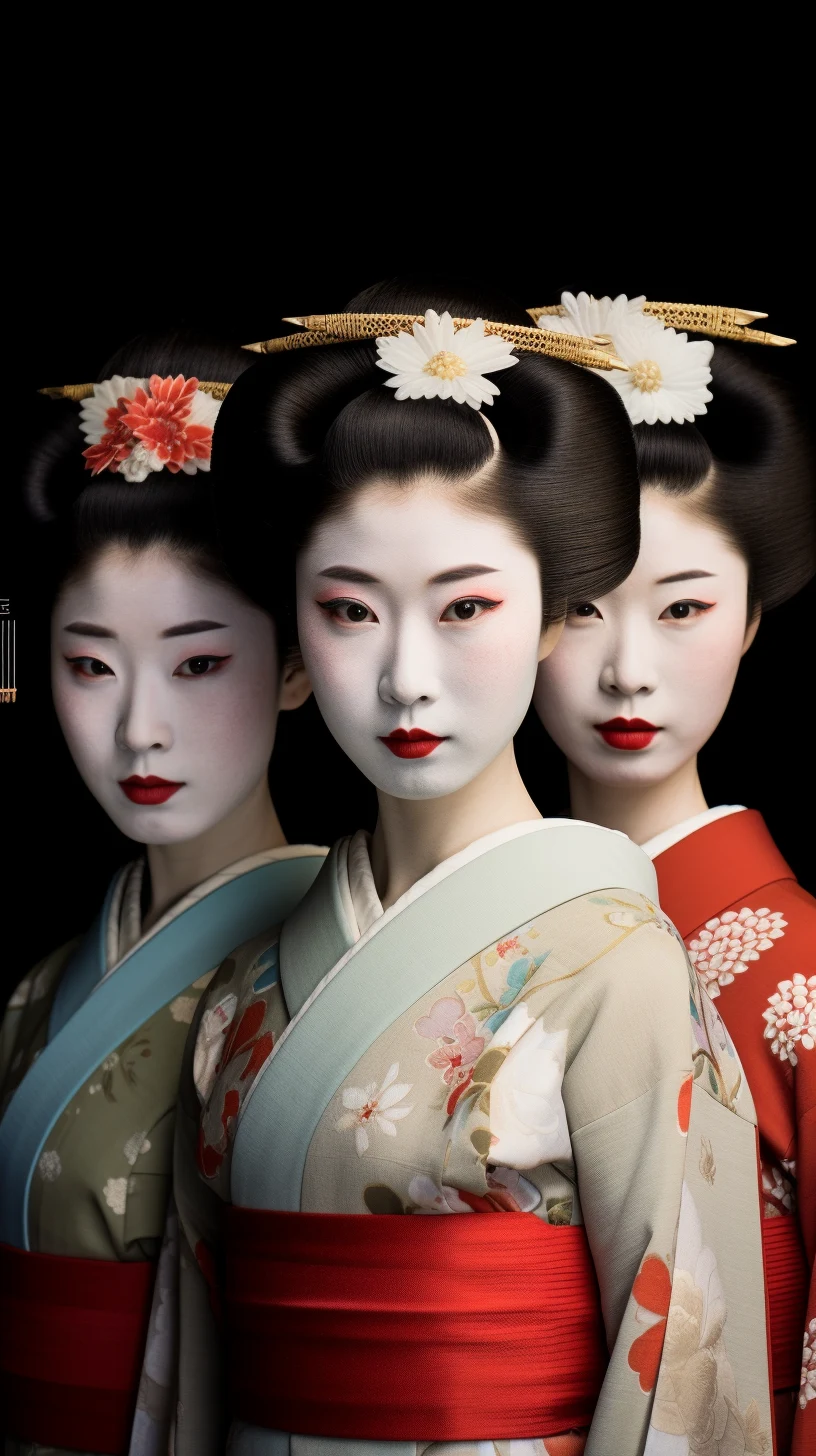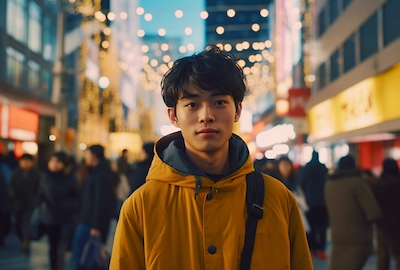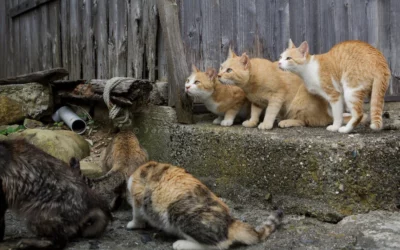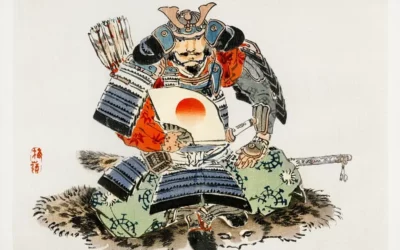Japan, a land of fascinating culture and age-old traditions, has a rich history of arts that’s intricately interwoven into its cultural fabric. One such captivating aspect is the world of Geisha, Maiko, and Oiran. Although often used interchangeably by the uninitiated, these terms represent distinct facets of Japanese traditional arts, each with its own nuances and customs. Today, we’ll explore the differences, often understood as maiko vs geisha and how Oiran fits into this dynamic, in these three cultural icons and the roles they play in the traditional Japanese arts.
Who are Geisha, Maiko, and Oiran?
In the traditional Japanese arts and culture, Geisha, Maiko, and Oiran hold distinct roles. The word Gei in Gei-sha and Gei-ko refers to performing arts. Sha and ko pretty much have the same meaning in this context: which means a person. Mai means “dance” in Japanese and –ko in this context refers to a child.
Geisha
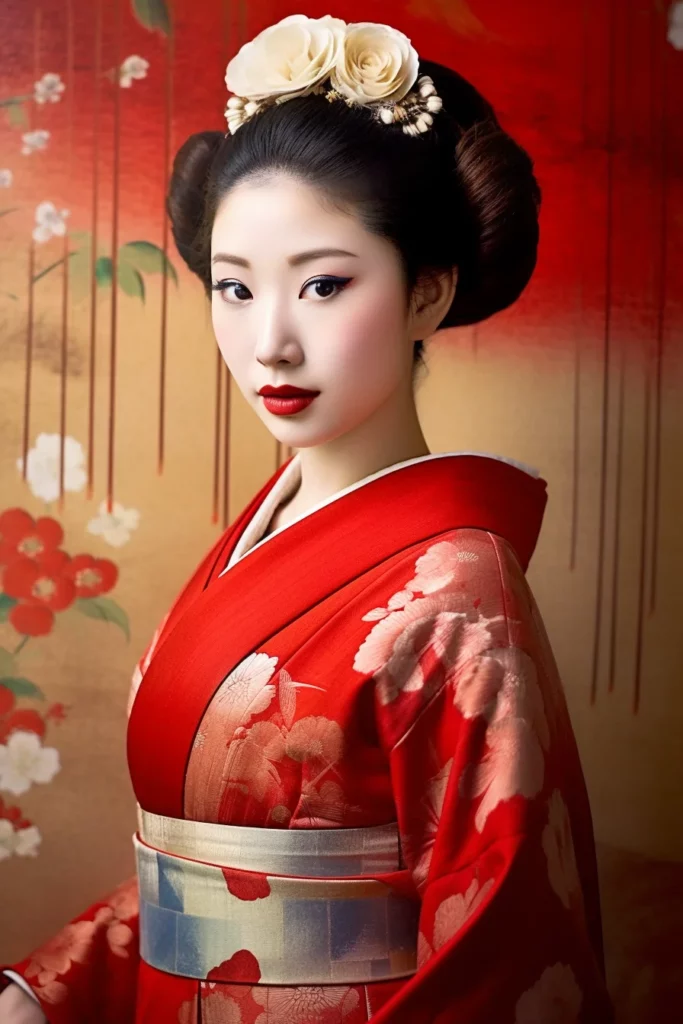
Often known as Geiko in Kyoto, Geisha are skilled artists trained in various traditional arts. Their name translates to “person of the arts,” reflecting their mastery of music, dancing, and tea ceremonies, among other skills. The official Geisha associations ensure that these women are well-trained to entertain guests at events or in tea houses, known as Ochaya. Their training is rigorous and can last for many years before they become a full-fledged geisha.
Foreigners as Geisha
While the tradition of Geisha is deeply rooted in Japanese culture, there have been instances of foreigners becoming Geisha in Tokyo. However, there are no such records in Kyoto, the heartland of Geisha culture, where the traditions are more strictly preserved.
Maiko
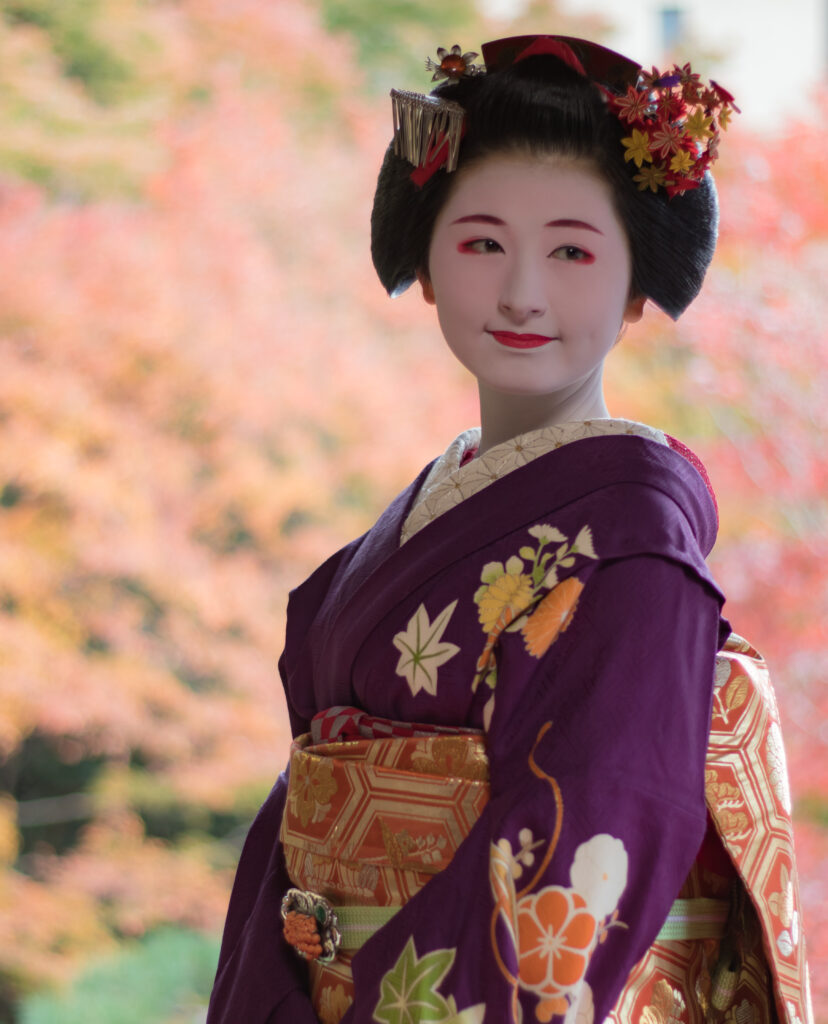
Maiko, an apprentice to Geisha or what we could also call a Geisha-in-training, is an integral part of the Japanese arts. These young women begin their training as early as 15 years old, embarking on a journey to become a Geisha. They spend years mastering the Kyoto dialect, the art of conversation, traditional music, dancing, and the art of the tea ceremony. The journey of a Maiko, in terms of training, is indeed a long and disciplined one.
The Role of Okaasan in Training
The role of Okaasan, or the mother of the house, is crucial in the training of Maiko and Geisha. The Okaasan conducts an interview to assess the candidate’s suitability for the demanding lifestyle. Once accepted, the trainee moves into the Okiya, or Geisha house, where all her needs, including food, clothing, and training, are taken care of. This financial support is considered a debt that the Maiko or Geisha must repay through her earnings after she begins working.
The Transition from Maiko to Geisha
The transition from Maiko to Geisha is a significant milestone in a woman’s career in this traditional art form. This transition, known as Erikae, is marked by changes in attire and makeup. The vibrant, long-sleeved kimonos and extravagant obi of a Maiko give way to the simpler, more elegant attire of a Geisha. The makeup also becomes more subtle, with a less pronounced contrast between the white face makeup and the natural skin color at the nape of the neck. The responsibilities also increase, as a Geisha is expected to be a master of the traditional arts and a sophisticated conversationalist.
The Role of Oneesan
During the training period, a Maiko is assigned a Oneesan, or older sister, who serves as her mentor. The Oneesan provides guidance and support, helping the Maiko navigate the complexities of the Geisha world. In return, the Maiko, known as the Imouto-san, or younger sister, has responsibilities towards her Oneesan, including helping her dress and assisting her at engagements.
Oiran
Unlike Geisha and Maiko, Oiran, the high-class courtesans of ancient Japan, were part of the pleasure quarters (Yoshiwara in Tokyo). Oiran were highly skilled in Japanese arts, however, their services extended beyond that, thus offering much more than just companionship.
The Role and History of Oiran
Oiran were the high-ranking courtesans during the Edo period. They were known for their beauty, artistic skills, and intellect. To receive the services of an Oiran, a customer had to follow a complex and expensive procedure, which included an elaborate procession known as the Oiran Dochu. Despite their high status, Oiran were bound by strict rules and were often unable to leave the pleasure quarters.
The Decline of Oiran
The popularity of Oiran began to decline with the rise of Geisha, who were more accessible to the common man. The final blow came with the outlawing of prostitution in Japan in 1958, which led to the closure of the pleasure quarters and the end of the Oiran tradition.
What are the differences between a maiko and a geisha?
The primary distinctions between a maiko and a geisha (also known as geiko) can be found in their age, visual appeal, and proficiency levels. Below is a comprehensive comparison:
| Geisha (Geiko) | Maiko | |
|---|---|---|
| Name Interpretation | Gei (arts) sha (person) | Mai (dance) ko (young person) |
| Expertise | Adept in traditional arts, capable of engaging in sophisticated dialogue | Undergoing training, speaks less |
| Age Group | Above 20 years old | Between 15 and 20 years old |
| Visual Presentation | Less colorful | Vibrant and colorful |
| Makeup Style | Fully white face, both lips painted red, less red around the eyes, no pink blush on cheeks | White powdered skin not reaching the hairline, only the lower lip is red, red around the eyes, pink blush on cheeks |
| Hair Arrangement | Wears a wig, simpler hairstyle with fewer hair accessories | Uses natural hair, sports the ware shinobu hairstyle (split peach and sides are also emphasized) with floral hairpins |
| Hairpins (kanzashi) | Shorter and simpler | More intricate. Maiko wears elongated floral hairpins in the first year |
| Kimono Style | Plain kimono with muted colors, white collars | Bright, long-sleeved kimono with vibrant colors, the back of the neck reveals the inside of the kimono, usually red and white |
| Obi (belt) | Shorter obi | Long and colorful obi |
| Footwear | Zori (low sandals) | Okobo (high sandals) |
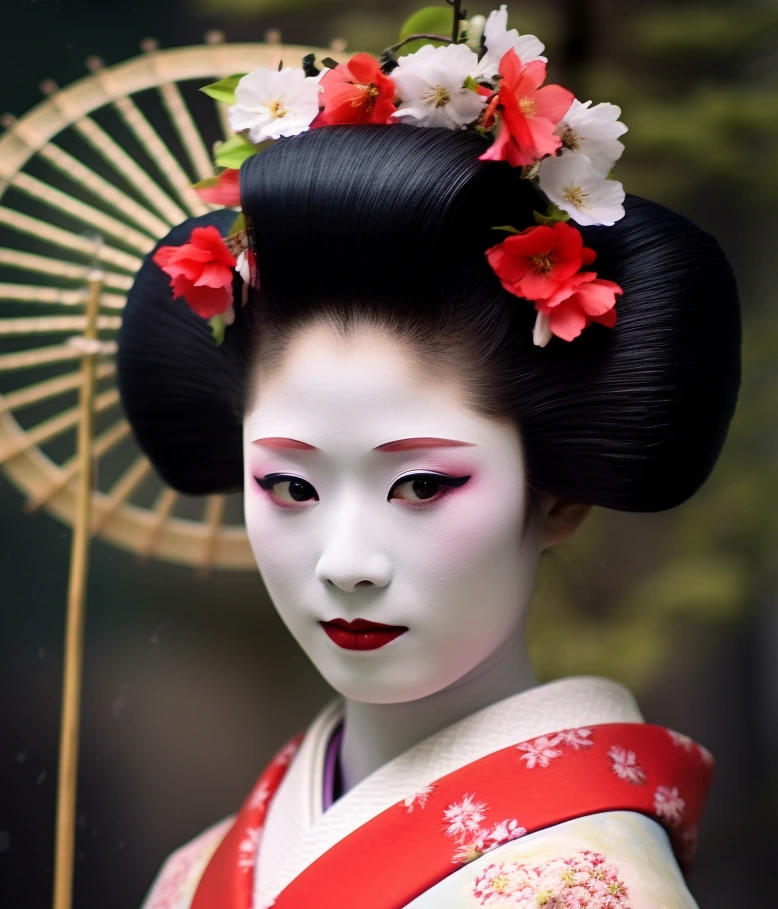
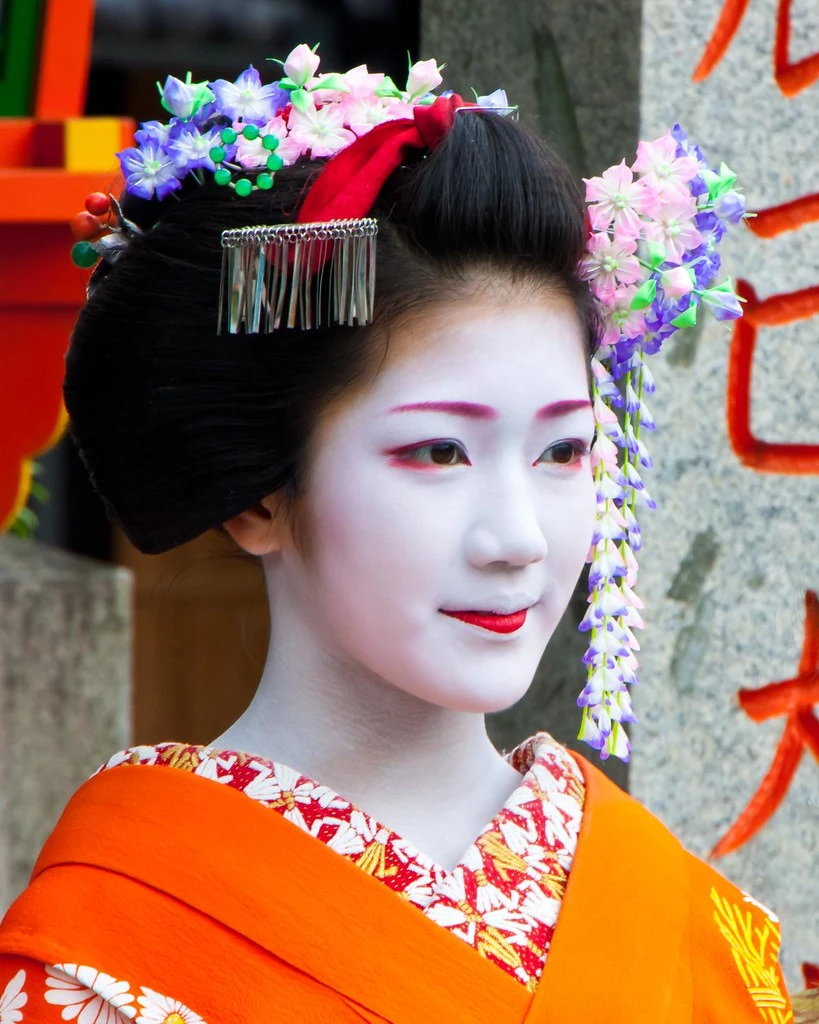
These contrasts mirror the progression and maturity levels in the path of becoming a Geisha. A Maiko, being in the early stages of training, exhibits a more vibrant and colorful look. On the other hand, a Geisha, being an experienced practitioner of traditional arts, presents a more understated and mature look.
Please be aware that this is a broad comparison and there might be variations based on different traditions and regions in Japan.
Training
The journey of becoming a Geisha starts with years of training as a Maiko. In the first year, a Maiko’s makeup is applied in a distinctive way, with white makeup, red and black accents, and the lower lip painted in a bright red color. This transformation over time marks their transition from Maiko to Geisha, an important milestone celebrated with the Erikae ceremony. Since Maiko is still training, she would speak less and usually nods or smiles during a conversation. Geiko, on the other hand, is an expert on how to initiate and maintain a conversation in any circumstance. Geisha would know what kind of conversations make patrons feel calm, relaxed, or happy.
Attire
The differences between Geisha, Maiko, and Oiran can also be noted in their attire. Maikos wear brightly colored long sleeve kimonos with extravagant patterns. Their hair is adorned with a multitude of colorful hair ornaments (known as “kanzashi”) and they wear high wooden sandals, called okobo. In contrast, a Geisha’s attire, once she transitions from a Maiko, becomes simpler.
On the other hand, Geishas’ attire is more subtle and mature. They usually wear simpler kimonos with less vibrant colors and shorter sleeves. Geishas also replace the complex hairstyles of Maiko with natural hair or wear wigs, adding only minimal hair ornaments. Their sandals, called zori, are lower and more comfortable . They do not don the same high wooden sandals that a Maiko wears.
Oiran, the top-tier courtesans, wore the most luxurious kimonos with highly intricate hairstyles, decorated with an array of hair ornaments. They were known for their high, wooden platform sandals and the unique “taka shimada” hairstyle.
Culture and Role
Cultural roles and services provided by Geisha, Maiko, and Oiran are distinct as well. Geisha and Maiko, based primarily in Kyoto’s Gion district, are trained to entertain guests with their mastery of traditional arts. Oiran, however, were more centered around the pleasure quarters of Tokyo and had a broader range of services. It’s the differences between Maiko and Geisha, and how they contrast with Oiran, that make this aspect of Japanese culture so rich and varied.
History and Origins
Understanding the history and origins of Geisha, Maiko, and Oiran provides a deeper appreciation of their roles in Japanese culture. The tradition of Geisha dates back to the 18th century, with the first Geisha being male entertainers. The role evolved over time, with women taking over the profession and becoming the Geisha we know today. The role of Maiko as an apprentice to Geisha also has a long history, with the training process remaining largely unchanged over the centuries. The tradition of Oiran, on the other hand, dates back to the Edo period, when they were the highest-ranking courtesans in the pleasure quarters.
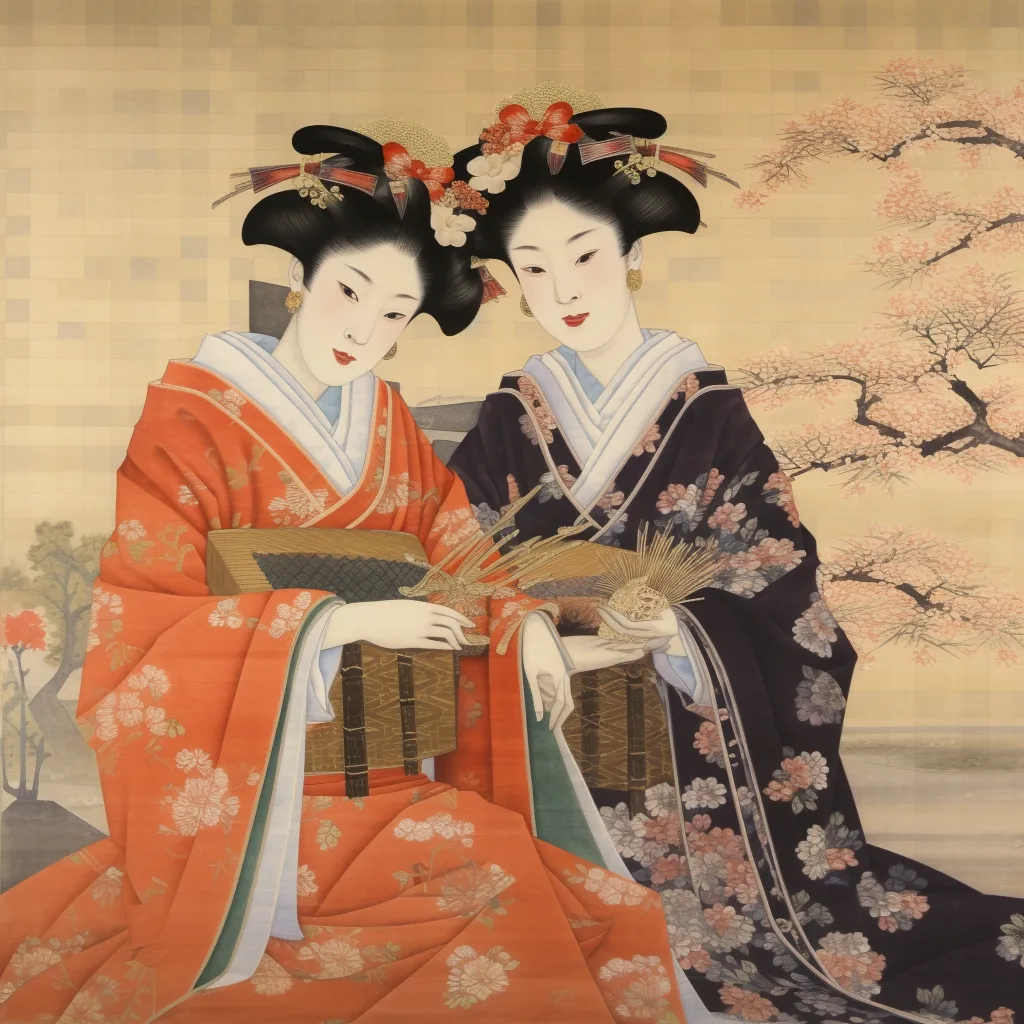
Understanding these differences between Geisha, Maiko, and Oiran helps to appreciate the depth and breadth of the Japanese traditional arts.
Most Popular Questions About Geishas
Can geisha have a boyfriend?
Geisha are allowed to have personal relationships, but these are often kept separate from their professional life. Their commitment to their art and their clients often takes precedence.
Is being a geisha honorable?
Yes, being a Geisha is considered honorable. They are respected for their dedication to traditional Japanese arts and culture.
Are geishas respected in Japan?
Yes, Geishas are highly respected in Japan. They are seen as custodians of traditional Japanese culture and arts.
Does geisha still exist today?
Yes, Geishas still exist today, primarily in Kyoto, where they are known as Geiko. Their numbers have decreased significantly compared to the past, but they continue to play a role in Japanese culture.
Why do geishas have white faces?
The white makeup, known as “shironuri,” is a traditional part of their appearance. It’s used to create a mask-like effect that accentuates their expressions during performances.
Who is the most famous geisha today?
The most famous Geisha today is difficult to determine as Geishas are discreet about their clientele and personal achievements. However, some Geishas have gained fame through their performances, such as the renowned Geiko Kikumaru of Kyoto.
How true is Memoirs of a Geisha?
“Memoirs of a Geisha” is a work of fiction, and while it provides a glimpse into the world of Geisha, it has been criticized for its inaccuracies and Westernized perspective.
How many geisha are left in the world?
The exact number is unknown, but it’s estimated that there are around 1,000 to 2,000 Geishas left in Japan, most of them in Kyoto.
How old is the oldest geisha?
The age of the oldest Geisha is not publicly available. However, Geishas can continue their profession into their 80s and 90s, as long as they are able to perform their duties.
What happens to geishas when they get old?
When Geishas get old, they may continue to work in their profession, or they may retire and become teachers of the arts they practiced.
While Geisha, Maiko, and Oiran give us a glimpse of the traditional Japanese arts, the culture of Japan is full of many other intriguing facets, like Ikebana (the art of flower arrangement), the tools used in Ikebana, and traditional Japanese food such as Udon and Soba. One can also explore the modern Japanese culture reflected in contemporary items such as the Evangelion Tamagotchi and the Demon Slayer Tamagotchi. Delving into these various aspects can provide a broader understanding and appreciation of Japanese culture, beyond just the Geisha, Maiko, and Oiran. With a deep dive into these fascinating topics, you will be able to appreciate the nuances that make up this rich and varied culture.

